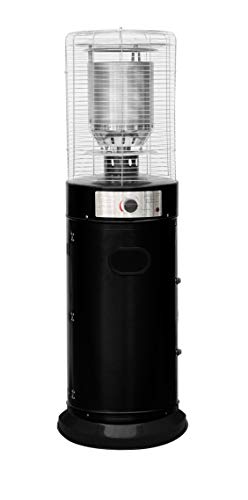20 Fun Informational Facts About Buy Gas Radiant Heaters

Buying Gas Radiant Heaters: A Comprehensive Guide
Gas radiant heaters have actually acquired appeal recently for their efficiency and capability to provide immediate heat. As more property owners and services try to find methods to keep their spaces comfy, comprehending the functions, advantages, and considerations when purchasing these heating systems can be extremely useful. Alfresco Heating into the intricacies of gas radiant heaters, helping potential purchasers in making informed decisions.
What are Gas Radiant Heaters?
Gas radiant heaters are gadgets that make use of propane or natural gas to discharge heat straight into a room. Rather than heating the air, they warm things and individuals in their area, providing convenience more quickly and efficiently. These heaters are popular for both indoor and outdoor settings due to their versatility and effectiveness.
Secret Features of Gas Radiant Heaters
- Direct Heating: Unlike conventional heaters that warm the air, gas radiant heaters offer direct warmth, making them an efficient choice for quickly heating up areas.
- Mobility: Many models are readily available as portable systems, enabling them to be quickly moved from one location to another.
- Fuel Variety: Gas radiant heaters can be powered by gas or propane, offering users versatility based upon schedule and preference.
- Adjustable Settings: Most gas radiant heaters come with adjustable heat settings, permitting users to customize the level of heat based upon their requirements.
Benefits of Gas Radiant Heaters
- Energy Efficiency: These heaters convert gas into heat effectively, resulting in lower utility bills compared to electrical heaters.
- Quick Heating: Radiant heat is felt practically immediately, making these heaters ideal for abrupt temperature drops.
- Low Maintenance: Gas radiant heaters typically need less maintenance than electric models, making them a hassle-free alternative.
- Ecologically Friendly: When powered by tidy gas, these heaters can be a more ecologically sustainable option compared to other heating methods.
Kinds Of Gas Radiant Heaters
When it concerns choosing a gas radiant heater, it's important to understand the various types available. Below are the most typical options:
- Indoor Gas Radiant Heaters: Designed for indoor areas, these heaters are typically vented or unvented and typically come with integrated security functions.
- Outdoor Gas Radiant Heaters: Commonly utilized in outdoor patios or outdoor dining locations, these heaters are designed to endure the components.
- Wall-Mounted Gas Radiant Heaters: A space-saving alternative, these units are ideal for smaller sized spaces and can be equipped with different heat outputs depending on the location's requirements.
- Freestanding Gas Radiant Heaters: These portable designs can be used in various places, perfect for those who require versatility.
Purchasing Guide: How to Choose the Right Gas Radiant Heater
When buying a gas radiant heater, a number of aspects must be thought about to ensure you pick the best model for your space:
1. Heating Capacity
- Measured in BTUs (British Thermal Units), the heater's capacity identifies just how much area it can successfully warm. Buyers ought to examine their specific requirements based upon space size.
| Space Size (sq feet) | Recommended BTUs (for Gas Radiant Heaters) |
|---|---|
| 100 - 200 | 5,000 - 10,000 BTUs |
| 200 - 400 | 10,000 - 20,000 BTUs |
| 400 - 600 | 20,000 - 30,000 BTUs |
| 600 - 800 | 30,000+ BTUs |
2. Kind of Gas
- Think about whether you will be using propane or natural gas, as various heaters deal with different fuel types.
3. Safety Features
- Look for models geared up with safety functions such as automatic shut-off valves, tip-over protection, and oxygen exhaustion sensors.
4. Installation Requirements
- Some heaters may need professional setup, especially vented designs. Make sure to consider the costs and requirements connected with setup.
5. Portability
- If versatility is essential, think about portable designs that can be easily moved from one location to another.
Installation and Maintenance
Gas radiant heaters are usually uncomplicated to install, especially portable designs. However, vented options might require professional installation to guarantee they meet local security codes.
Maintenance normally includes:
- Regular cleaning to avoid dust accumulation.
- Examining gas connections and fittings for leaks.
- Ensuring safety functions are functional.
Idea: Regular checks around the unit can help extend its life-span and maintain safety.
Frequently Asked Questions (FAQs)
Q1: Are gas radiant heaters safe for indoor use?A1: Yes
, as long as they are properly vented and equipped with essential security features, they can be safely used inside.
Q2: Can gas radiant heaters be used in enclosed spaces?A2: Unvented gas heaters can pose dangers in enclosed spaces due to possible suffocation or carbon monoxide gas accumulation. Constantly guarantee Outdoor Heating Solutions . Q3: How do I know what size heater I need?A3: The proper size depends on the location you intend to heat. Refer to the BTU chart
above to determine your requirements. Q4: What is the difference in between propane and natural gas heaters?A4: The main distinction depends on their energy source
; propane is provided via tanks, while natural gas is typically piped into homes. Q5: How can I optimize efficiency?A5: Ensure the heater is properly sized for your space, preserve it regularly, and consider using it in combination
with other heating methods for maximum comfort. Gas radiant heaters can be a fantastic addition to any home or service, providing energy-efficient and quick heating solutions. By understanding the various types, features, and factors to consider
when acquiring, buyers can make educated choices that fulfill their heating needs. With the ideal option, these heaters provide comfort, reliability, and a welcoming environment throughout chillier seasons.

